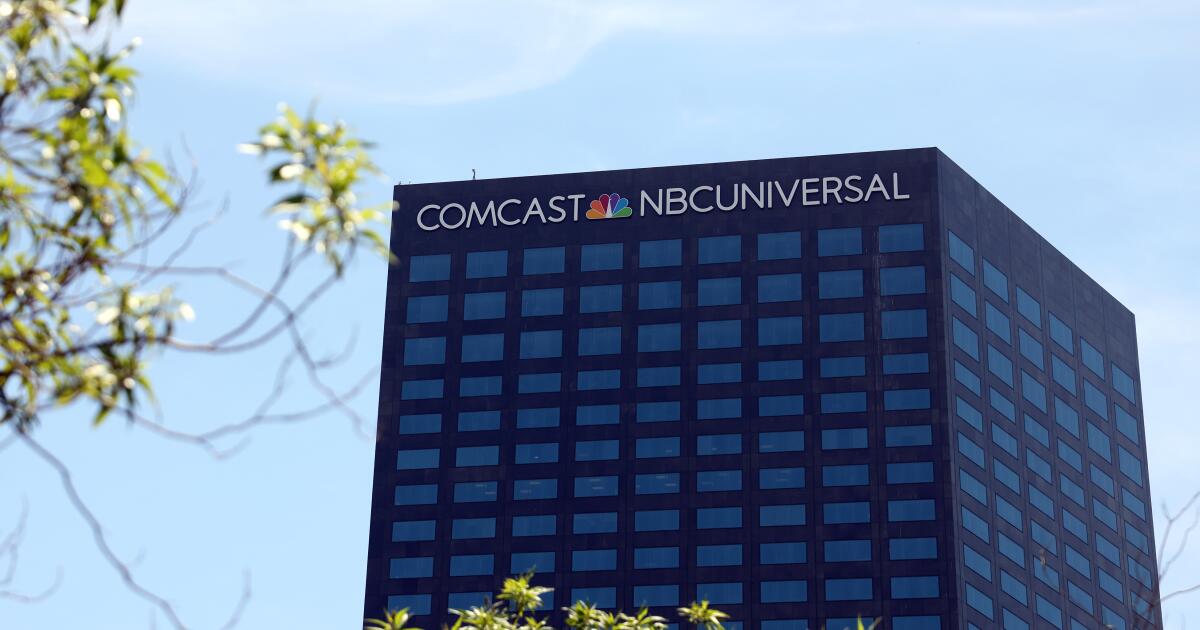Comcast reveals interest in Warner Bros. studios and streamer
NBCUniversal owner Comcast is indeed interested in some of Warner Bros. Discovery’s assets.
On a Thursday call with analysts to discuss third-quarter earnings, Comcast President Mike Cavanagh suggested the Philadelphia giant might bid for certain Warner assets, primarily the Warner Bros. film and television studios and its streaming service HBO Max.
Sources had previously said Comcast was angling to join the Warner Bros. Discovery auction after that company’s board formally opened the process last week. The Warner board has unanimously rejected three unsolicited bids from David Ellison’s Paramount, which has offered $58 billion for all of Warner Bros. Discovery.
Comcast isn’t looking to acquire the entire company or Warner’s large portfolio of cable channels that include CNN, TBS and Food Network. Instead, Cavanagh suggested that Comcast’s interest would be more narrow.
He noted that NBCUniversal and Warner Bros. have compatible businesses. Comcast wants to grow its studios business and its struggling streaming service, Peacock, which lost $217 million during the quarter.
“You should expect us to look at things that are trading in our space … It’s our job to try to figure out if there are ways to add value,” Cavanagh told analysts.
But he added a note of caution, saying the company didn’t feel that a merger was “necessary.”
“The bar is very high for us to pursue any [merger] transactions,” he said.
The Warner Bros. Discovery auction comes amid deep turmoil in the industry. Traditional entertainment companies, including Warner and NBCUniversal, have long relied heavily on cable programming fees to boost profit but consumers have been scaling back on pay-TV subscriptions amid the move to streaming.
To address that challenge, Comcast is spinning off its cable channels, including CNBC, MSNBC, USA and Golf Channel, into a separately traded company called Versant. That process is expected to be complete this year.
As part of the transition, the liberal-leaning MSNBC is changing its name to MS Now and dropping the peacock from its network logo, reflecting its pending exit from NBC, which will remain part of Comcast.
Cavanagh suggested that Comcast would not double down in a declining cable channel business that it was already exiting.
But Warner has other compelling businesses, including HBO and its Warner Bros. film and television studio. The Warner Bros. studio has released a string of movie blockbusters this year, including “Superman” and “A Minecraft Movie.”
Warner and NBCUniversal are investing in their respective streaming services but both lag Netflix, YouTube and Walt Disney Co. in terms of subscribers and engagement. Peacock has 41 million subscribers; the service has lost billions of dollars since Comcast launched it five years ago.
To shore up Peacock and the NBC broadcast network, Comcast has doubled down on sports, including striking a $27-billion, 10-year deal for NBA basketball, a contract that kicked in this month with the new season. (Nielsen ratings for the inaugural NBA game on NBC last week were strong — nearly 5 million viewers).
Most analysts believe that Ellison’s Paramount is in the best position to win Warner Bros. Discovery. They point to the Ellison family’s determination, wealth and political connections. Tech titan Larry Ellison, who is backing his son’s bid, is the second-richest man in the world behind Elon Musk, and President Trump views the elder Ellison as a good friend.
In contrast, Trump has displayed a dim view of Comcast Chairman and Chief Executive Brian Roberts, in large part, because of Comcast’s ownership of MSNBC, which Trump has accused of being an arm of the Democratic National Committee.
The tension has led observers to conclude that Comcast would face a stormy regulatory review process with Trump overseeing the Department of Justice, which would likely perform an anti-trust review of any major transaction for Warner Bros. Discovery.
Concerns about Comcast’s ability to get deals through the Trump administration may be overblown, Cavanagh said.
“I think more things are viable than maybe some of the public commentary [suggests],” Cavanagh said.







